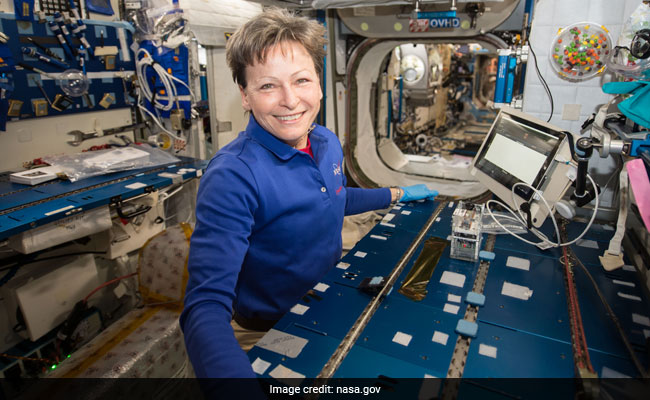
NASA astronaut Peggy Whitson performed the Genes in Space-3 investigation aboard the space station.
It could also benefit other experiments aboard the orbiting laboratory. Identifying microbes involves isolating the DNA of samples, and then amplifying – or making many copies – of that DNA that can then be sequenced, or identified.The investigation was broken into two parts: the collection of the microbial samples and amplification by Polymerase Chain Reaction (PCR), then sequencing and identification of the microbes.
NASA astronaut Peggy Whitson conducted the experiment aboard the orbiting laboratory, with NASA microbiologist and the project’s Principal Investigator Sarah Wallace and her team watching and guiding her from the US. As part of regular microbial monitoring, petri plates were touched to various surfaces of the space station. Working within the Microgravity Science Glovebox (MSG) about a week later, Whitson transferred cells from growing bacterial colonies on those plates into miniature test tubes,something that had never been done before in space.
Once the cells were successfully collected, it was time to isolate the DNA and prepare it for sequencing, enabling the identification of the unknown organisms – another first for space microbiology.
The samples were returned to Earth soon after.Biochemical and sequencing tests were completed in ground labs to confirm the findings from the space station.Researchers ran tests multiple times to confirm accuracy. Each time, the results were exactly the same on the ground as in orbit









